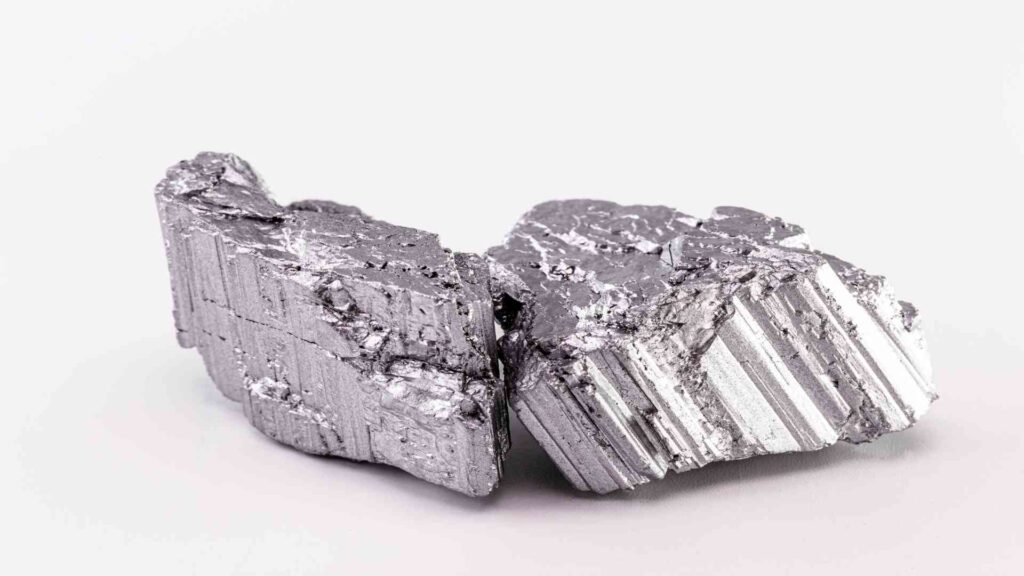
People often assume platinum is magnetic because of how strong and valuable it feels. Platinum is dense, heavy, and premium—so the question pops up:
Is platinum magnetic?
The short answer: Pure platinum is not magnetic.
If you place a magnet near real platinum jewelry—such as a platinum ring or pendant—you won’t see any magnetic pull. This is one of the simple ways jewelers test whether a piece is real (or mixed with other metals).
Why Isn’t Platinum Magnetic?
Platinum belongs to a group of metals called the platinum-group metals. These elements resist corrosion, don’t rust, and don’t react to magnets.
Real platinum does not attract magnets because of its atomic structure. Magnets only react strongly to metals like iron, cobalt, or nickel. Platinum does not behave that way, even though it’s much heavier and more durable.
Because platinum isn’t magnetic, testing it with a magnet is a quick first indicator of authenticity.
When Platinum Might Show Magnetic Reaction
Platinum jewelry is almost never 100% pure. Most pieces are 90–95% platinum and blended with other metals for strength, such as:
- Ruthenium
- Palladium
- Iridium
These metals are also non-magnetic.
However, if a platinum piece attracts a magnet, there are two possibilities:
- It contains magnetic metals such as nickel.
- It might not be platinum at all.
Some manufacturers use nickel to create a cheaper blend. Nickel is magnetic, which is why a magnet test can be helpful.
If there is a magnetic pull, a jeweler can check the content and verify whether the piece is genuinely platinum.
How to Test Platinum at Home (Simple Non-Damaging Test)
You can try a quick check at home:
- Hold a strong magnet close to the jewelry.
- Observe whether there is any attraction.
No movement = good sign.
Magnetic pull = may not be true platinum.
This test isn’t enough for full verification, but it’s fast and safe.
Why People Choose Platinum for Jewelry
Platinum is known for beauty, rarity, and durability. It’s especially loved for engagement and wedding jewelry.
Reasons customers choose platinum:
- Naturally white metal (doesn’t fade or yellow like white gold)
- Hypoallergenic for sensitive skin
- Strong and durable for lifetime wear
- Heavy and luxurious feel on the wrist or finger
White gold looks similar, but it is mixed with alloys and often needs rhodium plating to keep it bright. Platinum does not—it stays white naturally.
Platinum vs. White Gold: Is One Magnetic?
| Feature | Platinum | White Gold |
| Magnetic? | ❌ No | Sometimes (because of nickel) |
| Color | Naturally white | Rhodium-plated to appear white |
| Durability | Very strong and dense | Durable but may wear over time |
| Price | Higher | Slightly lower |
If you notice a strong magnetic reaction, it may be white gold or another metal misrepresented as platinum.
FAQs About Platinum Jewelry
- Is platinum magnetic?
No. Pure platinum and platinum jewelry alloys are not magnetic. - Why do some “platinum jewelry” pieces react to magnets?
If it reacts to a magnet, it may contain nickel or other magnetic metals—or it may not be real platinum. - Is the magnet test the only way to confirm platinum?
No. It’s helpful, but jewelers also use weight testing, acid testing, and hallmark verification. - Does platinum tarnish?
Platinum does not rust or tarnish. It keeps its natural color over time. - Is platinum better than white gold?
For durability and long-term value, many people prefer platinum. It maintains color naturally and resists wear.
Visit Wulf Diamond Jewelers for Genuine Platinum Jewelry
At Wulf Diamond Jewelers, every platinum piece is crafted with strict quality standards and labeled with purity hallmarks, ensuring authenticity. If you already own platinum jewelry and want confirmation or valuation, our expert jewelers can examine it and test purity accurately.
Looking for real platinum jewelry you can trust?


